We all know the stories about Daniel Boone, Davy Crocket, Kit Carson, Jim Bridger, Meriwether Lewis, William Clark, and many more too numerous to list; but how many have studied the skills and everyday chores that these men used to establish the United States as we know it today?
The books written, except for the Journals of Meriwether Lewis and a few others, normally regale us  in their plight to survive an Indian attack and where they rendezvoused for the winter, not the everyday skills used to survive the “wilds” they chose to make home. The same can be said of the stories of the medieval knights, but we are seeing more books written on the daily lives of the “peasant or commoner” after archaeologists do their digs and publish the findings. We can and MUST look to these if we are to survive a long term society and infrastructure collapse.
in their plight to survive an Indian attack and where they rendezvoused for the winter, not the everyday skills used to survive the “wilds” they chose to make home. The same can be said of the stories of the medieval knights, but we are seeing more books written on the daily lives of the “peasant or commoner” after archaeologists do their digs and publish the findings. We can and MUST look to these if we are to survive a long term society and infrastructure collapse.
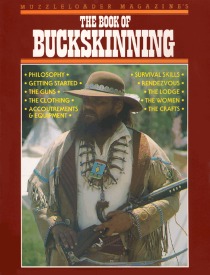 There are several resources online and books being written to help explain the skills used by our Colonial ancestors to build this country; The Book of Buckskinning series by William Scurlock, A Pilgrim’s Journey by Mark A. Baker, Sons of a Trackless Forest by Mark A Baker, Muzzleloader magazine and the National Muzzleloading Rifle Association with their Muzzle Blasts magazine to name a few, will be great resources to add to the survival library. The Books of Buckskinning (8 in all) have several chapters written on everything from making soap and candles to building fires and firearms and everything in between. By studying the Native Americans, we’ll learn skills of a people that survived without the aid of even metal (until the Europeans brought it). The medieval era brought us the metallurgy to make iron and steel, shape it into tools and weapons and living a primitivef lie on homesteads. Most of my skills are grounded more in the Colonial/Mountain Man era, as that is the times I study and “play” in the most.
There are several resources online and books being written to help explain the skills used by our Colonial ancestors to build this country; The Book of Buckskinning series by William Scurlock, A Pilgrim’s Journey by Mark A. Baker, Sons of a Trackless Forest by Mark A Baker, Muzzleloader magazine and the National Muzzleloading Rifle Association with their Muzzle Blasts magazine to name a few, will be great resources to add to the survival library. The Books of Buckskinning (8 in all) have several chapters written on everything from making soap and candles to building fires and firearms and everything in between. By studying the Native Americans, we’ll learn skills of a people that survived without the aid of even metal (until the Europeans brought it). The medieval era brought us the metallurgy to make iron and steel, shape it into tools and weapons and living a primitivef lie on homesteads. Most of my skills are grounded more in the Colonial/Mountain Man era, as that is the times I study and “play” in the most.
Related:Native American Methods for Catching Fish and Edible Sea Life
The medieval blacksmiths were very resourceful and paved the way for our modern tools and many of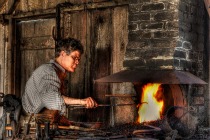 the items we take for granted today. They found that by burning peat moss (with the iron ore imbedded) they would get balls of molten iron for working their trade. There are natural deposits of iron ore, but will we have the time and energy to mine it? By burning this peat moss, the iron becomes injected with a high carbon count from the vegetation being burnt with it and now we have a stronger metal. These blacksmiths did their work without the advanced forges of today but still made tools and weapons that kept society and mankind growing and surviving as a whole. They found that by adding other metals, they could form new metals, such as steel, and create an even stronger product. Find books on primitive metallurgy and acquire the skills necessary before they are truly needed. How much pride will you have knowing you skinned that squirrel with a knife you made, cooked it in a pan you created and used the fork and knife you forged? Eating and cooking utensils can also be made from wood, horn and bone.
the items we take for granted today. They found that by burning peat moss (with the iron ore imbedded) they would get balls of molten iron for working their trade. There are natural deposits of iron ore, but will we have the time and energy to mine it? By burning this peat moss, the iron becomes injected with a high carbon count from the vegetation being burnt with it and now we have a stronger metal. These blacksmiths did their work without the advanced forges of today but still made tools and weapons that kept society and mankind growing and surviving as a whole. They found that by adding other metals, they could form new metals, such as steel, and create an even stronger product. Find books on primitive metallurgy and acquire the skills necessary before they are truly needed. How much pride will you have knowing you skinned that squirrel with a knife you made, cooked it in a pan you created and used the fork and knife you forged? Eating and cooking utensils can also be made from wood, horn and bone.
Land Navigation
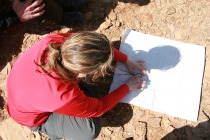 Land navigation by primitive means may be required. Compasses get broken or lost and without the local surplus or sporting goods store, replacement may be a long wait. Also, in the event of a military invasion, that fancy tritium compass may pin point your location or path due to the minute radioactive signatures (the nice part that glows may be the same as gives you away). I do not know nor claim to claim to know enough on this subject to give advice….yet. I am trying to learn and hope to become proficient in using a sextant and follow the stars.
Land navigation by primitive means may be required. Compasses get broken or lost and without the local surplus or sporting goods store, replacement may be a long wait. Also, in the event of a military invasion, that fancy tritium compass may pin point your location or path due to the minute radioactive signatures (the nice part that glows may be the same as gives you away). I do not know nor claim to claim to know enough on this subject to give advice….yet. I am trying to learn and hope to become proficient in using a sextant and follow the stars.
Related:Survival Skills To Learn From The Indian Tribes
Self bows (long bows) and wooden arrows tipped with flint arrowheads fed the tribes of America long 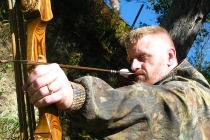 before the muskets and fowling pieces of the Europeans. Preppers should study and become proficient in their use and making these tools. By heating the wood for the arrows, you can straighten it with a piece of antler. There are several books written on the subjects of building bows, making arrows and flint knapping. The type of wood used will depend on your locale. Hickory, Osage Orange and Yew are probably the most common used, but research what the Natives used in your area. Bow staves can be purchased at first to practice and acquire the skills to build your own from scratch.
before the muskets and fowling pieces of the Europeans. Preppers should study and become proficient in their use and making these tools. By heating the wood for the arrows, you can straighten it with a piece of antler. There are several books written on the subjects of building bows, making arrows and flint knapping. The type of wood used will depend on your locale. Hickory, Osage Orange and Yew are probably the most common used, but research what the Natives used in your area. Bow staves can be purchased at first to practice and acquire the skills to build your own from scratch.
Insects are a pest, literally as well as figuratively. There are several options to use that do not incorporate over the counter “repellents” and their chemicals. I use the large “punks” used for lighting fireworks. I will light several and place them around my area when fishing or sitting out at night. You can also burn certain fungi to get the same effect, tree fungus smoldering works very well.
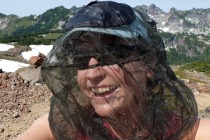 For my personal repellent, I wear a “medicine bag” like the Native Americans. I use a mixture of many essential oils and plant material. I still get bit, but not often and a lot less than when I used commonly used chemical based repellents. Unscented baby oil or “Skin So Soft” (Avon product) also works well. You can also help keep blood sucking insects at bay by eating garlic. It doesn’t work immediately, but mosquitoes and other “vampire” pests do not seem to appreciate the taste or smell.
For my personal repellent, I wear a “medicine bag” like the Native Americans. I use a mixture of many essential oils and plant material. I still get bit, but not often and a lot less than when I used commonly used chemical based repellents. Unscented baby oil or “Skin So Soft” (Avon product) also works well. You can also help keep blood sucking insects at bay by eating garlic. It doesn’t work immediately, but mosquitoes and other “vampire” pests do not seem to appreciate the taste or smell.
Clothes will be another necessary item that people take for granted. The fact that almost everyone buys mass produced clothing now and no longer makes “homespun” clothes will become tantamount to morale and survival. A lot of people just throw away that pair of jeans because of a hole in the knee, but if you cannot run over to the local department store and buy a new pair; they will soon be out of the necessary items to survive even the slightest change in weather. Humans do not have the natural skin and hair to survive the very systems that Mother Nature relies on to survive, i.e. thunderstorms, snows, wind, sun, etc. We are a fragile species and must rely on our mind for survival. Being able to patch and sew clothes or make new items from either the hides of our game or domestic animals or produce textiles from raw cotton and wool; this will become a valuable skill. People talk of stockpiling goods to barter with, which is a good idea, but this is temporary if we do suffer a complete TEOTWAWKI (End Of The World) event and must rebuild what has taken centuries to build.
The hides of the game harvested or the livestock slaughtered can be tanned from several natural 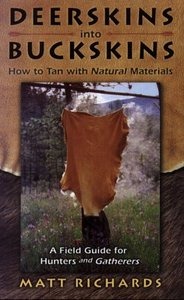 methods. I know the brain tanning method and using the tannic acid from hardwood trees. Every animal has enough brain matter to tan the hide it wears. The book, “Deerskins to Buckskins” by Matt Richards is a valuable book for this endeavor. The ashes and wood of hardwoods have a lot of tannic acid in them and can be used to tan a hide. A hollow stump is great to use, but if still available, you can use plastic barrels. I’d avoid metal containers. Place the hide in the container and add water and hardwood ashes from a fire. You will have to continually stir the hide until complete. Leather clothes will provide protection from the elements and other dangers like thorns (the reason cowboys wore chaps). A soft deerskin shirt and pants are also very quiet in the woods for stealth. Hides with the hair on are warmer, as the fur provides insulating properties. Also the fur on can help camouflage you from the game you are hunting (How To Vanish articles). The warmest of all hides is polar bear, followed by caribou; the Native Americans and many of our mountain men used buffalo robes to ward of the cold of harsh winters. Please find books to read and research and practice all this before the time you need it.
methods. I know the brain tanning method and using the tannic acid from hardwood trees. Every animal has enough brain matter to tan the hide it wears. The book, “Deerskins to Buckskins” by Matt Richards is a valuable book for this endeavor. The ashes and wood of hardwoods have a lot of tannic acid in them and can be used to tan a hide. A hollow stump is great to use, but if still available, you can use plastic barrels. I’d avoid metal containers. Place the hide in the container and add water and hardwood ashes from a fire. You will have to continually stir the hide until complete. Leather clothes will provide protection from the elements and other dangers like thorns (the reason cowboys wore chaps). A soft deerskin shirt and pants are also very quiet in the woods for stealth. Hides with the hair on are warmer, as the fur provides insulating properties. Also the fur on can help camouflage you from the game you are hunting (How To Vanish articles). The warmest of all hides is polar bear, followed by caribou; the Native Americans and many of our mountain men used buffalo robes to ward of the cold of harsh winters. Please find books to read and research and practice all this before the time you need it.
Making a grist/flour mill will also be of great value. You will need this to turn the wheat, rye, acorns, etc into flour for common items such as bread, cakes (morale booster), pancakes, cornbread, etc. Grist mills can be powered by livestock, people, wind or water. A water powered mill built along the banks of a river or stream is probably the most common, but you can create one by using a wind mill to turn the stones as well if you live in an area where water is scarce and wind is plentiful (Great Plains). Nuts can be ground down to make your own peanut/almond/etc butter or used in batter to add flavor and protein to pancakes or breads. Flour can also be used for bartering or even the use of the grist mill can be used as a bartering item; you can grind their corn into meal for a percentage of the product to save your garden for other items. The ideas are only slowed or held back by your imagination, the civility of your neighbors and the ability to protect your preparations from renegades.
Related:BLOG SKILL SERIES: Paracord Survival Net
Candles
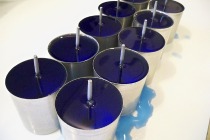 Candles will possibly be the greatest value of a light source we have and learning to make them is simple and fun for the kids. All you need is a string (kite string works well and is cheap) and a bucket of melted wax and a bucket of water. After dipping the string into the wax bucket, dip it in the water to cool the wax, wipe the water off and repeat as often as necessary to get the candle to the size you want. This will form the longer candles normally seen in candle holders. You can use deer antler to make a candle holder for them and really have a rustic looking light source. You can also make candles in jars by putting the wick material (string or whatever you choose) and pouring the melted wax in. Beeswax works well for these and can be eaten in an emergency. Animal tallow and fat can also be used for candles. You can also add essential oils from sage, marigold and other plants to help keep insects away and adds a nice smell to the Bug Out Location (BOL).
Candles will possibly be the greatest value of a light source we have and learning to make them is simple and fun for the kids. All you need is a string (kite string works well and is cheap) and a bucket of melted wax and a bucket of water. After dipping the string into the wax bucket, dip it in the water to cool the wax, wipe the water off and repeat as often as necessary to get the candle to the size you want. This will form the longer candles normally seen in candle holders. You can use deer antler to make a candle holder for them and really have a rustic looking light source. You can also make candles in jars by putting the wick material (string or whatever you choose) and pouring the melted wax in. Beeswax works well for these and can be eaten in an emergency. Animal tallow and fat can also be used for candles. You can also add essential oils from sage, marigold and other plants to help keep insects away and adds a nice smell to the Bug Out Location (BOL).
by Regulator5





